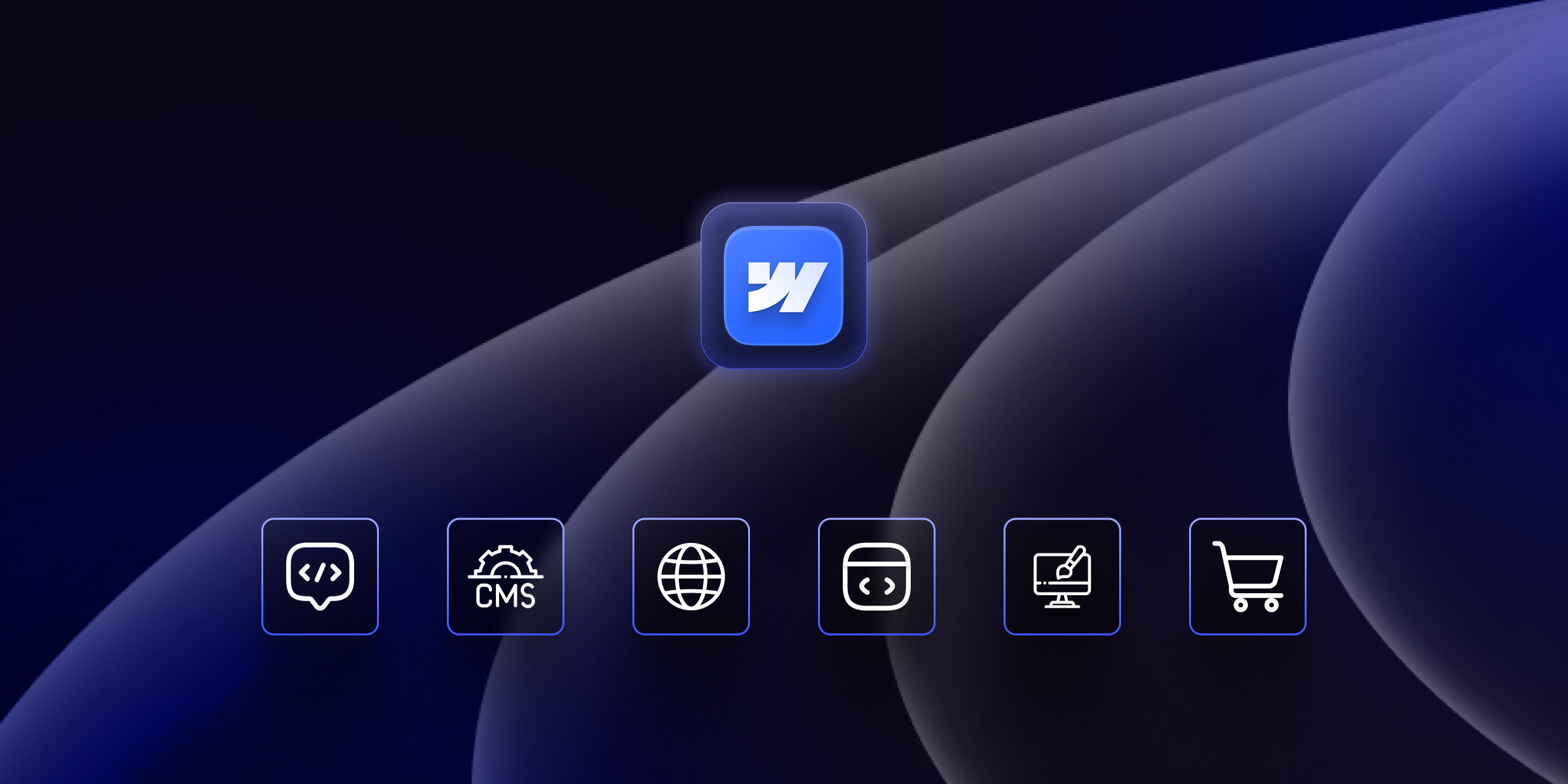Top 10 Webflow Key Features (2025)
Discover the top Webflow key features that make it a powerful platform for designers and developers.

Looking for a way to connect your Webflow forms to HubSpot? This guide dives straight into the process of connecting your Webflow forms to HubSpot, ensuring a smooth flow of leads from your website directly into your CRM.
Imagine this: Someone fills out a form on your website, but the information gets lost in a black hole. Connecting your Webflow forms to HubSpot stops that from happening. Here's how it makes your life (and marketing) easier:
In short, connecting Webflow forms to HubSpot is like giving your marketing a turbo boost. It saves you time, helps you understand your leads better with Webflow HubSpot integration, and lets you focus on what matters—growing your business!
Integrating your Webflow forms with HubSpot allows you to collect and manage leads within your CRM platform seamlessly. This streamlines your marketing workflow and ensures valuable lead data is captured effectively.
Here's a detailed breakdown of the four methods to connect your Webflow forms to HubSpot:
This built-in method offers a user-friendly approach for connecting your forms. Here's a step-by-step walkthrough:
- Go to your Webflow Workspace Settings.
- Navigate to the Apps and Integrations tab
- Click "Connected Apps" and find an app
- Find HubSpot on the marketplace.
- Install an app
- Go to your Webflow project settings.
- Find the "Forms" tab (might be under "Marketing" or "Site settings").
- Look for "Form integrations."
- Click "Map new form."
- Choose "HubSpot" as the marketing platform.
- Select the HubSpot form where you want Webflow submissions to go.
- Match the corresponding fields between your Webflow form and the HubSpot form.
- Click "Connect form" to finalize the mapping.
Essentially, you're setting up a bridge between your Webflow form and the desired HubSpot form for HubSpot Webflow integration to collect and manage leads effectively.
This method leverages pre-built HubSpot forms within your Webflow design. Here's how to achieve it:
- Log in to your HubSpot dashboard and navigate to "Marketing" > "Lead Capture" > "Forms."
- Click "Create Form" and choose the "Embedded form" option.
- Design your form using the drag-and-drop builder and customize its appearance.
- Once complete, click the "Embed" button and copy the provided code snippet.
- Go to your Webflow Designer and drag the "Embed" element onto your canvas where you want the form to appear.
- Paste the copied HubSpot form code snippet into the embed element settings.
- Publish your Webflow website to make the form live.
Also, Read: Top 10 Webflow Applications and Integrations
Zapier, a third-party automation tool, acts as a bridge between Webflow forms and HubSpot. Here's a simplified overview:
- Sign up for a free Zapier account or choose a paid plan depending on your needs.
- Within Zapier, create a new Zap selecting Webflow as the trigger app and HubSpot as the action app.
- Choose the specific Webflow form submission as the trigger and select the desired HubSpot action (e.g., creating a new contact).
- Map the corresponding fields between Webflow and HubSpot to ensure data flows correctly.
- Test and activate your Zap to automate form submissions.
This method requires some development knowledge and involves implementing custom code. Here's a general outline:
- Design your form within Webflow using the form builder and its styling options.
- Utilize JavaScript or a similar language to capture form submission data.
- Integrate the HubSpot Forms API within your code to send the captured data to HubSpot for creating contacts or other desired actions.
- Install the HubSpot tracking code on your Webflow website to enable tracking and analytics for form submissions.
The best way to connect Webflow form to HubSpot depends on your comfort level. Here's a breakdown:
Ultimately, all methods achieve the same result: seamlessly sending form submissions from Webflow to HubSpot.
Choose the approach that best suits your team's skills to connect Webflow form to HubSpot!
Also, Read: How to Add Google Analytics to Webflow
Now that you've learned how to connect your Webflow forms to HubSpot with Webflow HubSpot integration, you can streamline your marketing and sales process. No more jumping between platforms!
New leads will automatically flow into your HubSpot CRM, giving you a central hub for all your contacts. This makes it easy to find information, follow up with leads, and segment them for targeted marketing campaigns.
You can even track which forms are converting well to optimize your marketing efforts. If you're not a developer, simply share these instructions with your technical team. If you are a developer, try the methods yourself and let us know how it goes!
Recommended Read: Essential Webflow Mobile Optimization Tips for Better Performance
There are 4 ways:
Enable it in Webflow settings, grant Webflow access to HubSpot, and then map your Webflow form fields to corresponding HubSpot lead fields.
Create a form in HubSpot, design it, copy the embed code, and paste it into a Webflow embed element.
Zapier acts as a bridge between Webflow and HubSpot, automating form submissions. You set up a Zap to trigger on a Webflow form submission and perform an action in HubSpot.

Discover the top Webflow key features that make it a powerful platform for designers and developers.

Learn how to create a blog on Webflow with a step-by-step guide. From CMS setup to SEO practices, build a responsive, custom blog without coding.

Why theCSS Agency is the top choice for Webflow development services. Learn how our expertise in Webflow, SEO, and conversion optimization helps businesses to build high-performing sites.
Quick Turnaround. No Contracts. Cancel Anytime. Book a 30 minutes consulting call with our expert.